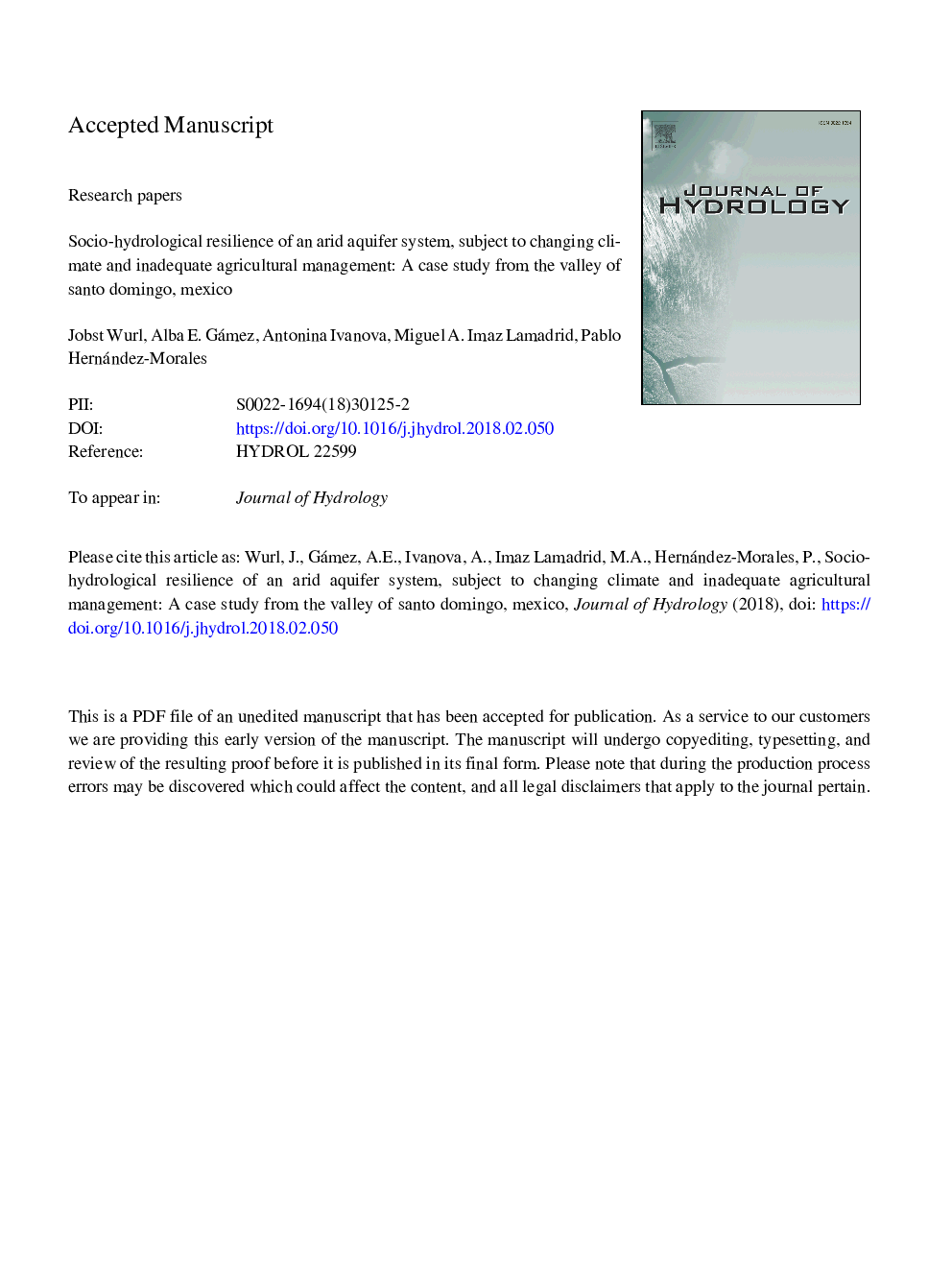| Article ID | Journal | Published Year | Pages | File Type |
|---|---|---|---|---|
| 8894911 | Journal of Hydrology | 2018 | 46 Pages |
Abstract
Mismanagement has caused the overexploitation of one third of the major aquifers in Mexico, mainly due to excessive water extraction for agricultural irrigation. Santo Domingo (Baja California Sur, in northern Mexico, where agriculture absorbs nearly 80% of water) is the only aquifer in the Mexico where, after a period of overexploitation, equality between extraction and recharge rates was achieved, although this has not meant the securement of long-term water availability. This paper offers an analysis of hydrological resilience of a water-limited arid ecosystem under future extraction scenarios and changing climate conditions. A regional groundwater flow model is proposed using MODFLOW software. Then, different indicators were modeled as outcomes of coupled human-water systems to predict water trajectories under different human impacts. The aim was to recognize water insecurity scenarios and define appropriate actions to a more sustainable use of this scarce resource in the region. Thus, although runoff derived from extreme floods may favor infiltration, the involvement of local stakeholders and decision makers to reverse the adverse impacts of current water management and climate change is imperative if water availability and better quality are to be secured.
Related Topics
Physical Sciences and Engineering
Earth and Planetary Sciences
Earth-Surface Processes
Authors
Jobst Wurl, Alba E. Gámez, Antonina Ivanova, Miguel A. Imaz Lamadrid, Pablo Hernández-Morales,
